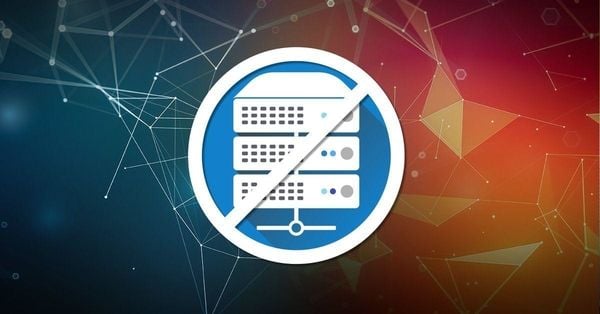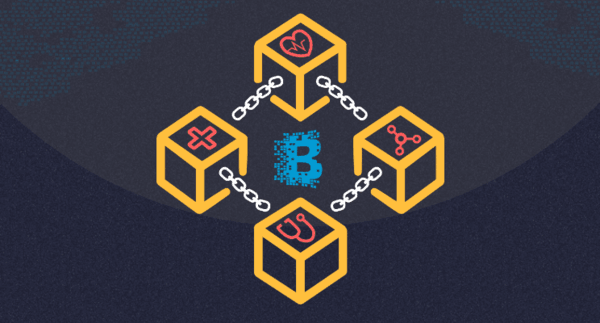
Will Robots Really Replace Security Guards?
April 29, 2019
What Is Serverless Computing?
May 1, 2019Blockchain technology can transform healthcare sector with placing patients at the center, increasing the interoperability, security, and privacy of health data. Blockchain can provide a new approach for HIE, Health Information Exchange, by making electronic health records more secure, efficient, and disintermediated.
Even though blockchain technology is not a cure for some disease, but it provides a platform for investment and experimentation.
Here are some of the challenges of Blockchain Health IT:
As the concept of blockchain is not widely spread yet, there are a few successful use cases currently available. This is one of the most challenging parts because there aren’t many ideal models to follow, creating uncertain situations.
Storage Capability
Blockchain in healthcare is comprised of medical images, records, lab reports, and documents that require a large amount of storage space. As every member in the chain has a copy of the complete medical history of each other in the U.S., This volume has been expected to grow potentially, exceeding the storage capacity of the existing blockchain technology.
Data Ownership
One of the biggest challenges of this distributed digital ledger, Blockchain is that who owns the healthcare data. Who is responsible for granting permission for sharing data? This process isn’t established yet.
Cost
The total cost of creating as well as maintaining healthcare blockchain isn’t known yet, and one can’t consider investing in blockchain without knowing how much they are going actually to invest.
Rules and Regulations
Currently, there are no rules or regulations available that can address the usage of blockchain in the healthcare sector. Along with that, implementing new policies for healthcare blockchain will comply with the current privacy regulations such as HIPAA act.
How Blockchain Can Transform Healthcare

Blockchain has brought significant changes in the world. It’s a distributed ledger that keeps records of activities and transactions taking place across the network. One thing that makes Blockchain technology different is once the information is added in it, can’t be altered.
Information stored in the blockchain is entirely secure. If anyone wants to make changes in a block, they have to make changes in all the consecutive blocks after it.
Three main principles allow blockchain technology to provide safe and secure digital relationships:
1.Private Key Cryptography
Here, a secret key and an algorithm work as variables to encrypt and decrypt the codes. The key remains confidential even if the algorithm is not entirely secured. Though transactions in the blockchain technology take place on the open network, there is a reference created for the secure digital identity.
2. Distributed Ledger
A distributed ledger, also known as the shared ledger is referred to as the consensus of shared records. Here, the ledger updated in the real-time with no central authority being responsible for maintaining it. As network participants updated the accounting, any changes occur in it, reflects immediately.
3. Authentication
In Blockchain technology, all the transactions have been authenticated before getting into the chain. Some algorithms verify and validate all the transactions. Once a sale is encrypted, digitally signed, and stored then the authenticity is sealed.
Here Are Some Major Challenges Solved by Blockchain Technology
Drug Traceability
Drug forging is considered as the most critical problem faced by the healthcare industry. According to HRFO, Health Research Funding Organization, 10-30% of medications in India and other developing countries are not original. The hit to pharma companies in the US is worth $200 billion a year.
The main risk is not the medicine fraud but the impact it will have on the patients who take those medications. These forged drugs provide patients with different outcomes as compared to genuine ones. Instead of helping patients recover, these counterfeited drugs may worsen their condition.

Blockchain stores all the drug transactions into its system, making it impossible for anyone to change. It can be anything but hard to add forge drugs. You have the option to either use private Blockchain or public Blockchain. In the private Blockchain system, the credibility of drug movement from the lab to patients is maintained strictly.
Along with that, in the private blockchain, distributors himself feed the medication data; hence there is no single chance to doubt the credibility of the drugs. This type of transparency can only be expected from a reliable database like Blockchain.
Once drugs are moved from the producers to the wholesalers, distributors, and retailers, blocks created in the database keep updated every transaction point. In case, any counterfeit happens, backtracking would be useful and straightforward to follow.
Patient Data Management
As the new HIPAA norms, all of the patient health information, aka PHI have to meet the minimum criteria of privacy, security, and integrity. The challenge is how the patient data will be secured when they have to share it with third parties such as hospitals, physicians, and hospitals.
In the Blockchain system, there is a unique identifier for each block that has PHI information together with an individual patient identification number. With the help of API. Pre-Authorized entities can access the required data without covering the patient’s identity.
Similarly, patients have the option to choose to whom they want to share access and would the entrance be complete or partial. In addition to that, patients can also share access to specific third-party vendors to access PHI.
Data Security in Clinical Trial
Clinical trials decide the competence of some specific solutions that can cure particular diseases. R&D and Hypothesis testing entail tons of data about research, data collection, reporting, findings, and analysis. As scientists take full responsibility for his study, so there wouldn’t be any chances of determining unauthorized modifications or data leaks.
Such acts can damage the integrity of scientists’ research and efforts and may alter the outcomes too.
Blockchain system enables you to reveal the legitimacy of records feed in the order. Scientists get proof of their presence and verify to be right as there is a need for pre-validation by various nodes before entering into a block.
Once entered, the authentic can be determined easily. Along with that, there would be no room for unauthorized modification or alteration due to the enduring Blockchain architecture.

